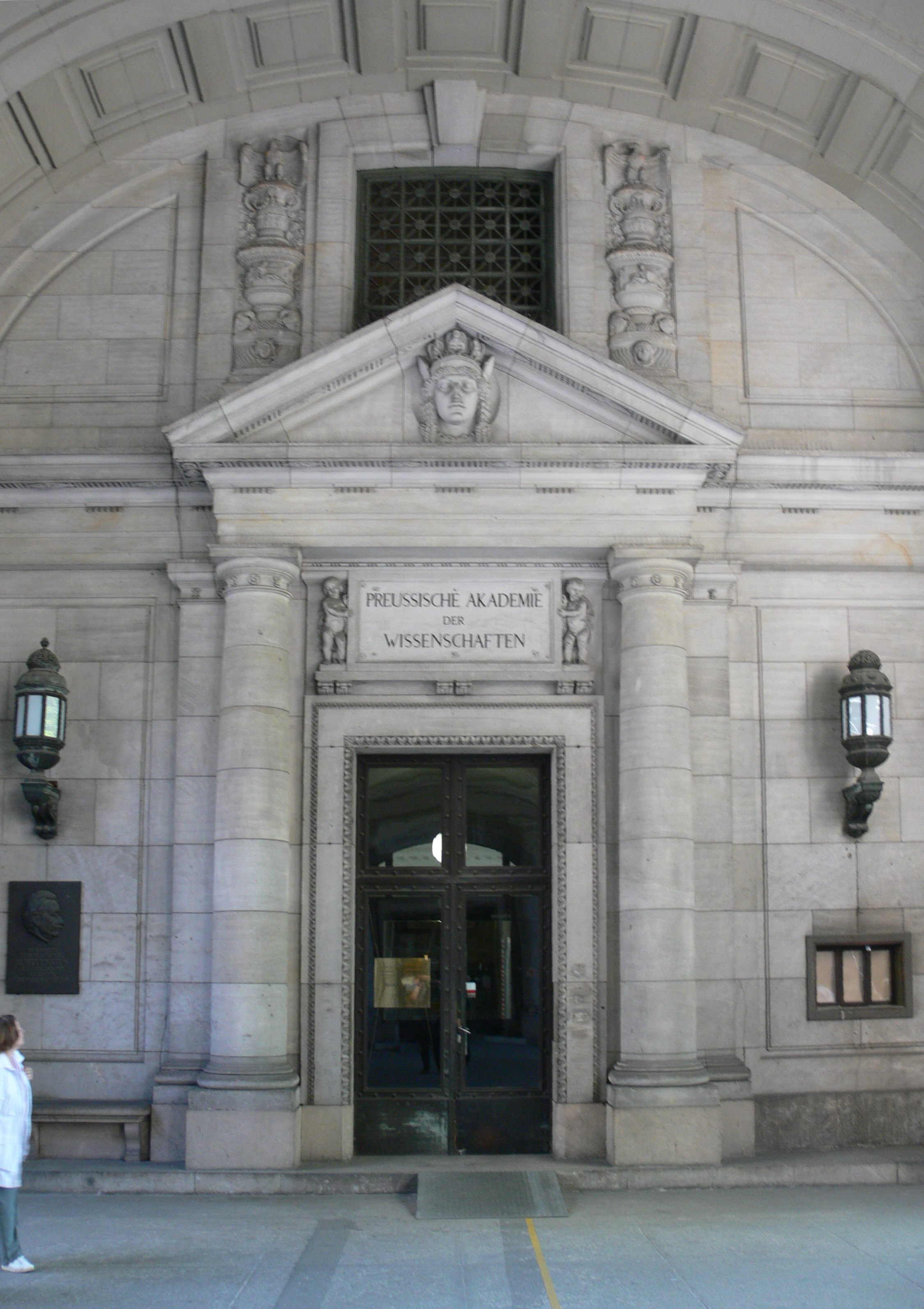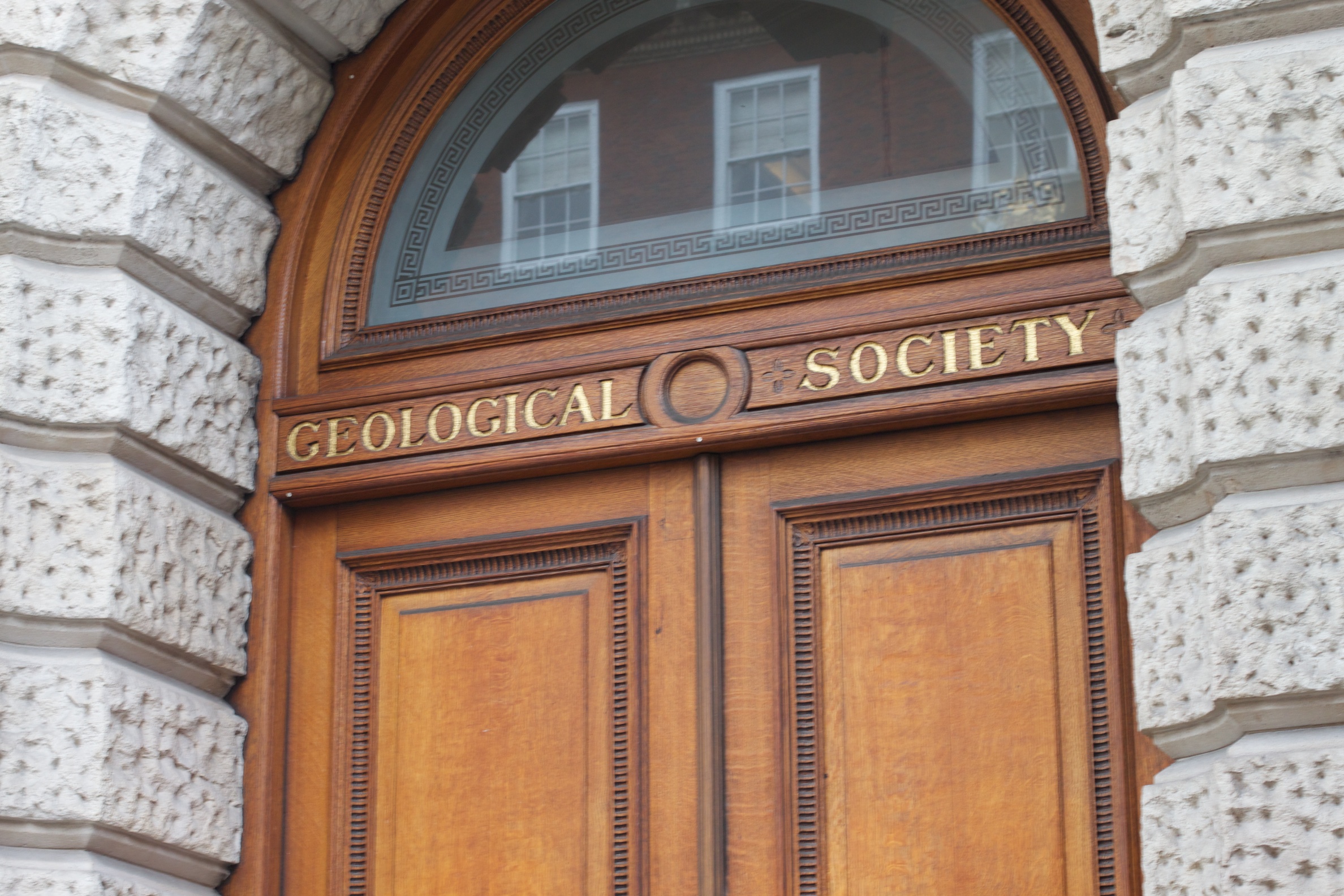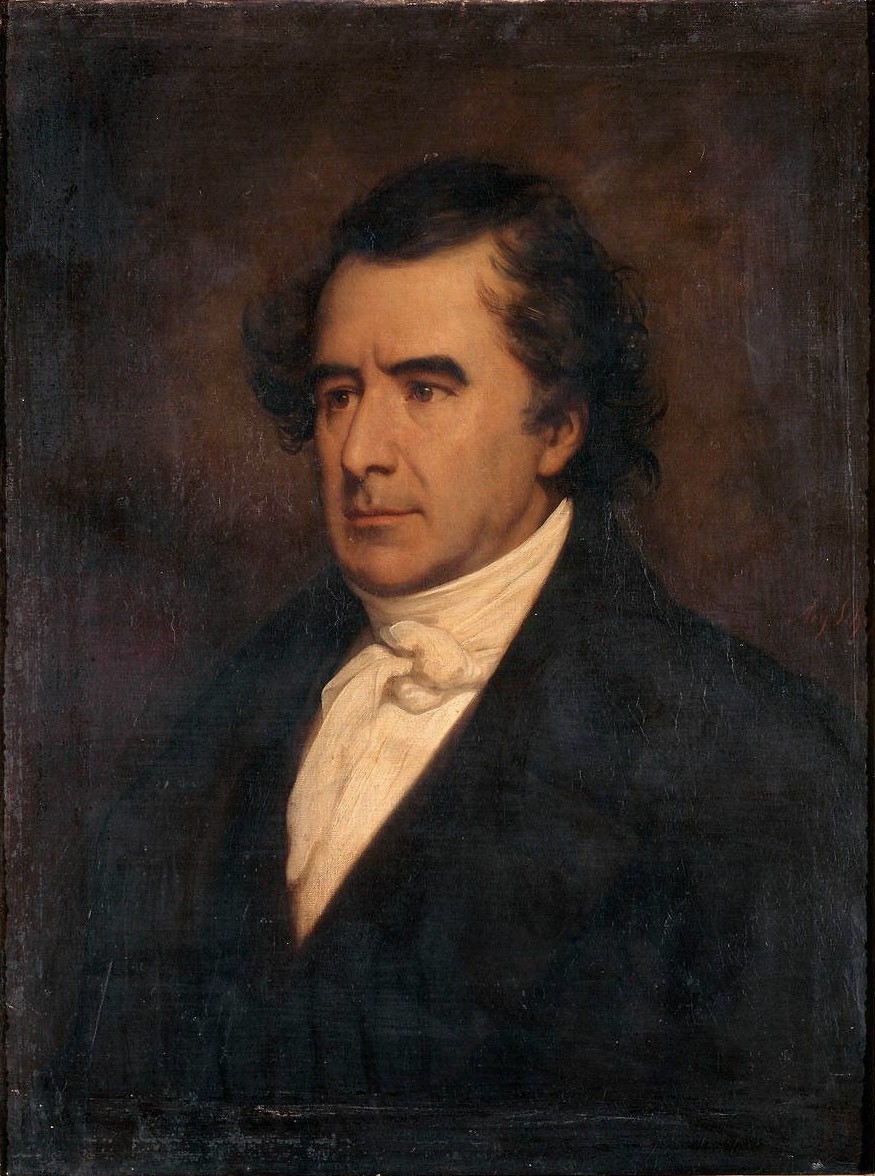|
Jean-Baptiste Élie De Beaumont
Jean-Baptiste Armand Louis Léonce Élie de Beaumont (25 September 1798 – 21 September 1874) was a French geologist. Biography Élie de Beaumont was born at Canon, in Calvados. He was educated at the Lycee Henri IV where he took the first prize in mathematics and physics at the École polytechnique, where he stood first at the exit examination in 1819; and at the École des mines (1819–1822), where he began to show a decided preference for the science with which his name is associated. In 1823 he was selected along with Dufrénoy by Brochant de Villiers, the professor of geology in the École des Mines, to accompany him on a scientific tour to England and Scotland, in order to inspect the mining and metallurgical establishments of the country, and to study the principles on which George Bellas Greenough's geological map of England (1820) had been prepared, with a view to the construction of a similar map of France. In 1835 he was appointed professor of geology ... [...More Info...] [...Related Items...] OR: [Wikipedia] [Google] [Baidu] |
Mézidon-Canon
Mézidon-Canon () is a former commune in the Calvados department in the Normandy region in northwestern France. On 9 September 1972, Mézidon merged with Canon to create Mézidon-Canon. On 1 January 2017, it was merged into the new commune Mézidon Vallée d'Auge. 16 September 2016 Canon was the site of a fortress built in 1050 by Odo (Eudes) Stigand for William the Bastard, duke of Normandy, Odo was the first baron of Mézidon and founder of the priory of St. Barbara, known as Sainte-Barbe-en-Auge. See also * |
Prussian Academy Of Sciences
The Royal Prussian Academy of Sciences (german: Königlich-Preußische Akademie der Wissenschaften) was an academy established in Berlin, Germany on 11 July 1700, four years after the Prussian Academy of Arts, or "Arts Academy," to which "Berlin Academy" may also refer. In the 18th century, it was a French-language institution since French was the language of science and culture during that era. Origins Prince-elector Frederick III of Brandenburg, Germany founded the Academy under the name of ''Kurfürstlich Brandenburgische Societät der Wissenschaften'' ("Electoral Brandenburg Society of Sciences") upon the advice of Gottfried Wilhelm Leibniz, who was appointed president. Unlike other Academies, the Prussian Academy was not directly funded out of the state treasury. Frederick granted it the monopoly on producing and selling calendars in Brandenburg, a suggestion from Leibniz. As Frederick was crowned " King in Prussia" in 1701, creating the Kingdom of Prussia, the Academy wa ... [...More Info...] [...Related Items...] OR: [Wikipedia] [Google] [Baidu] |
New Zealand
New Zealand ( mi, Aotearoa ) is an island country in the southwestern Pacific Ocean. It consists of two main landmasses—the North Island () and the South Island ()—and over 700 List of islands of New Zealand, smaller islands. It is the List of island countries, sixth-largest island country by area, covering . New Zealand is about east of Australia across the Tasman Sea and south of the islands of New Caledonia, Fiji, and Tonga. The country's varied topography and sharp mountain peaks, including the Southern Alps, owe much to tectonic uplift and volcanic eruptions. New Zealand's Capital of New Zealand, capital city is Wellington, and its most populous city is Auckland. The islands of New Zealand were the last large habitable land to be settled by humans. Between about 1280 and 1350, Polynesians began to settle in the islands and then developed a distinctive Māori culture. In 1642, the Dutch explorer Abel Tasman became the first European to sight and record New Zealand. ... [...More Info...] [...Related Items...] OR: [Wikipedia] [Google] [Baidu] |
West Coast, New Zealand
The West Coast ( mi, Te Tai Poutini, lit=The Coast of Poutini, the Taniwha) is a region of New Zealand on the west coast of the South Island that is administered by the West Coast Regional Council, and is known co-officially as Te Tai Poutini. It comprises the territorial authorities of Buller District, Grey District and Westland District. The principal towns are Westport, Greymouth and Hokitika. The region, one of the more remote areas of the country, is also the most sparsely populated. With a population of just 32,000 people, Te Tai Poutini is the least populous region in New Zealand, and it is the only region where the population is declining. The region has a rich and important history. The land itself is ancient, stretching back to the Carboniferous period; this is evident by the amount of carboniferous materials naturally found there, especially coal. First settled by Kāi Tahu in approximately 1200 CE, the area was famous across New Zealand for its richness in pounamu ... [...More Info...] [...Related Items...] OR: [Wikipedia] [Google] [Baidu] |
Westland Tai Poutini National Park
Westland Tai Poutini National Park is a national park located on the western coast of New Zealand's South Island. Established in 1960 as Westland National Park to commemorate the centenary of the European settlement of Westland District, it covers of largely mountainous terrain and forest. The park borders the Aoraki/Mount Cook National Park along the Main Divide of the Southern Alps / Kā Tiritiri o te Moana, and includes many of the West Coast's glaciers, most notably including the Fox / Te Moeka o Tuawe and Franz Josef / Kā Roimata o Hine Hukatere glaciers. The small tourist towns of Fox Glacier and Franz Josef / Waiau are the main settlements within the park, while remnants of old gold mining towns can be found along the coast. The park offers hunting opportunities for red deer, chamois, and tahr, while helicopters allow hunters to access the rugged, mountainous areas. The popular Copland Track runs upstream from the Karangarua River bridge. Along with the moun ... [...More Info...] [...Related Items...] OR: [Wikipedia] [Google] [Baidu] |
Mount Elie De Beaumont
{{WestCoastNZ-geo-stub ...
Mount Elie de Beaumont is a high mountain in the Southern Alps on the South Island of New Zealand and the northernmost Three-thousander of the country. It is surrounded by several glaciers like Johannes Glacier in the north, Burton Glacier to the east, Times Glacier to the west and Anna Glacier, a tributary to the Tasman Glacier, in the south. It was named by Julius von Haast after the french geologist Jean-Baptiste Élie de Beaumont. References Southern Alps Elie de Beaumont Elie and Earlsferry is a coastal town and former royal burgh in Fife, and parish, Scotland, situated within the East Neuk beside Chapel Ness on the north coast of the Firth of Forth, eight miles east of Leven. The burgh comprised the linked vi ... [...More Info...] [...Related Items...] OR: [Wikipedia] [Google] [Baidu] |
William Hopkins
William Hopkins FRS (2 February 179313 October 1866) was an English mathematician and geologist. He is famous as a private tutor of aspiring undergraduate Cambridge mathematicians, earning him the ''sobriquet'' the " senior-wrangler maker." He also made important contributions in asserting a solid, rather than fluid, interior for the Earth and explaining many geological phenomena in terms of his model. However, though his conclusions proved to be correct, his mathematical and physical reasoning were subsequently seen as unsound. Early life Hopkins was born at Kingston-on-Soar, in Nottinghamshire, the only son of William Hopkins, a gentleman farmer. In his youth he learned practical agriculture in Norfolk before his father rented him a small farm at Bury St Edmunds, Suffolk. However, Hopkins was unsuccessful as a farmer and, when his first wife died sometime around 1821, he took the opportunity to mitigate his losses and enter St Peter's College (now Peterhouse) at the Unive ... [...More Info...] [...Related Items...] OR: [Wikipedia] [Google] [Baidu] |
Geological Society Of London
The Geological Society of London, known commonly as the Geological Society, is a learned society based in the United Kingdom. It is the oldest national geological society in the world and the largest in Europe with more than 12,000 Fellows. Fellows are entitled to the postnominal FGS (Fellow of the Geological Society), over 2,000 of whom are Chartered Geologists (CGeol). The Society is a Registered Charity, No. 210161. It is also a member of the Science Council, and is licensed to award Chartered Scientist to qualifying members. The mission of the society is: "Making geologists acquainted with each other, stimulating their zeal, inducing them to adopt one nomenclature, facilitating the communication of new facts and ascertaining what is known in their science and what remains to be discovered". History The Society was founded on 13 November 1807 at the Freemasons' Tavern, Great Queen Street, in the Covent Garden district of London. It was partly the outcome of a previous ... [...More Info...] [...Related Items...] OR: [Wikipedia] [Google] [Baidu] |
Mountain Range
A mountain range or hill range is a series of mountains or hills arranged in a line and connected by high ground. A mountain system or mountain belt is a group of mountain ranges with similarity in form, structure, and alignment that have arisen from the same cause, usually an orogeny. Mountain ranges are formed by a variety of geological processes, but most of the significant ones on Earth are the result of plate tectonics. Mountain ranges are also found on many planetary mass objects in the Solar System and are likely a feature of most terrestrial planets. Mountain ranges are usually segmented by Highland (geography), highlands or mountain passes and valleys. Individual mountains within the same mountain range do not necessarily have the same Structural geology, geologic structure or petrology. They may be a mix of different orogenic expressions and terranes, for example Thrust fault, thrust sheets, Fault-block mountain, uplifted blocks, Fold (geology), fold mountains, and vol ... [...More Info...] [...Related Items...] OR: [Wikipedia] [Google] [Baidu] |
François Arago
Dominique François Jean Arago ( ca, Domènec Francesc Joan Aragó), known simply as François Arago (; Catalan: ''Francesc Aragó'', ; 26 February 17862 October 1853), was a French mathematician, physicist, astronomer, freemason, supporter of the Carbonari revolutionaries and politician. Early life and work Arago was born at Estagel, a small village of 3,000 near Perpignan, in the ' of Pyrénées-Orientales, France, where his father held the position of Treasurer of the Mint. His parents were François Bonaventure Arago (1754–1814) and Marie Arago (1755–1845). Arago was the eldest of four brothers. Jean (1788–1836) emigrated to North America and became a general in the Mexican army. Jacques Étienne Victor (1799–1855) took part in Louis de Freycinet's exploring voyage in the ''Uranie'' from 1817 to 1821, and on his return to France devoted himself to his journalism and the drama. The fourth brother, Étienne Vincent (1802–1892), is said to have collaborated with ... [...More Info...] [...Related Items...] OR: [Wikipedia] [Google] [Baidu] |
American Philosophical Society
The American Philosophical Society (APS), founded in 1743 in Philadelphia, is a scholarly organization that promotes knowledge in the sciences and humanities through research, professional meetings, publications, library resources, and community outreach. Considered the first learned society in the United States, it has about 1,000 elected members, and by April 2020 had had only 5,710 members since its creation. Through research grants, published journals, the American Philosophical Society Museum, an extensive library, and regular meetings, the society supports a variety of disciplines in the humanities and the sciences. Philosophical Hall, now a museum, is just east of Independence Hall in Independence National Historical Park; it was designated a National Historic Landmark in 1965. History The Philosophical Society, as it was originally called, was founded in 1743 by Benjamin Franklin, James Alexander, Francis Hopkinson, John Bartram, Philip Syng, Jr. and others a ... [...More Info...] [...Related Items...] OR: [Wikipedia] [Google] [Baidu] |
Royal Swedish Academy Of Sciences
The Royal Swedish Academy of Sciences ( sv, Kungliga Vetenskapsakademien) is one of the royal academies of Sweden. Founded on 2 June 1739, it is an independent, non-governmental scientific organization that takes special responsibility for promoting natural sciences and mathematics and strengthening their influence in society, whilst endeavouring to promote the exchange of ideas between various disciplines. The goals of the academy are: * to be a forum where researchers meet across subject boundaries, * to offer a unique environment for research, * to provide support to younger researchers, * to reward outstanding research efforts, * to communicate internationally among scientists, * to advance the case for science within society and to influence research policy priorities * to stimulate interest in mathematics and science in school, and * to disseminate and popularize scientific information in various forms. Every year, the academy awards the Nobel Prizes in physics and chem ... [...More Info...] [...Related Items...] OR: [Wikipedia] [Google] [Baidu] |






